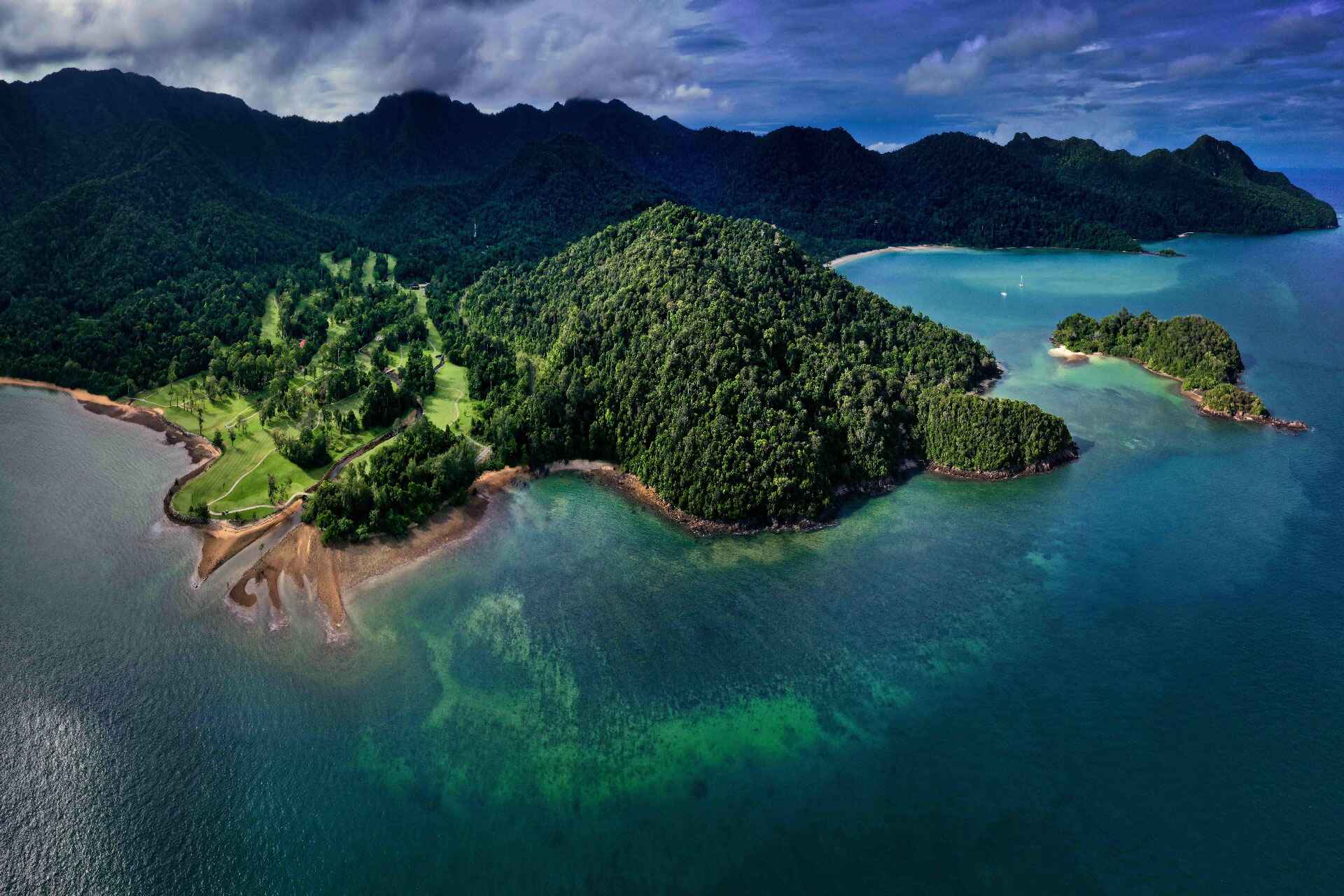
An archipelago is a fascinating geographical formation that consists of a chain or cluster of islands. These breathtaking wonders of nature can be found all over the world, each with its own unique charm and characteristics. From the stunning beaches of the Seychelles to the volcanic landscapes of Indonesia, archipelagos offer a diverse range of environments and ecosystems.
In this article, we will dive into the intriguing world of archipelagos and explore some astounding facts about these island formations. Whether you’re a geography enthusiast or simply curious about the wonders of our planet, get ready to be amazed by the remarkable features and intriguing secrets of archipelagos around the globe.
Key Takeaways:
- Indonesia is home to the world’s largest archipelago with over 17,000 islands, offering diverse landscapes and cultures. Archipelagos are formed through volcanic activity, playing a crucial role in preserving biodiversity.
- Archipelagos, like the Galapagos Islands and the Great Barrier Reef, are famous for their unique wildlife and marine life. They provide habitats for a wide range of species and contribute to the preservation of global biodiversity.
Archipelago is a cluster of islands.
An archipelago is a group or chain of islands scattered in a body of water, such as the ocean or a sea. It can consist of small islets or large landmasses separated by water.
The world’s largest archipelago is Indonesia.
With over 17,000 islands, Indonesia boasts the largest archipelago in the world. It stretches across the equator and offers diverse landscapes, cultures, and ecosystems.
The word “archipelago” originates from Greek.
The term “archipelago” comes from the Greek words “archi” meaning chief or principal, and “pelagos” meaning sea. It was first used by ancient Greeks to describe the Aegean Sea.
Archipelagos are formed through volcanic activity.
Many archipelagos are formed through volcanic processes. When underwater volcanoes erupt, they create new landmasses over time, resulting in the formation of islands and archipelagos.
The Galapagos Islands are an archipelago known for its unique wildlife.
The Galapagos Islands, located in the Pacific Ocean, are famous for their incredible biodiversity and the inspiration they provided for Charles Darwin’s theory of evolution.
The Thousand Islands archipelago lies between the United States and Canada.
The Thousand Islands archipelago stretches across the Saint Lawrence River, forming a natural border between the United States and Canada. It offers stunning scenery and recreational activities.
The Aeolian Islands in Italy are a UNESCO World Heritage Site.
The Aeolian Islands, situated off the coast of Sicily, are renowned for their volcanic landscapes, crystal-clear waters, and rich cultural heritage. They are a designated UNESCO World Heritage Site.
The Maldives is a popular archipelago destination for tourists.
The Maldives, located in the Indian Ocean, is a dream destination for many travelers. It is famous for its pristine beaches, turquoise waters, and luxurious resorts.
The Japanese archipelago is made up of over 6,800 islands.
Japan is comprised of thousands of islands, forming its unique archipelago. Honshu, Hokkaido, Kyushu, and Shikoku are the four main islands of Japan.
The Stockholm Archipelago consists of approximately 30,000 islands.
The Stockholm Archipelago, located in Sweden, is one of the largest archipelagos in the Baltic Sea. It offers a peaceful retreat with its picturesque landscapes and tranquil waters.
The Great Barrier Reef in Australia is an archipelago of coral reefs.
The Great Barrier Reef, situated off the coast of Queensland, is the world’s largest coral reef system. It is composed of thousands of individual reefs and is home to a remarkable array of marine life.
The Philippines is an archipelago of over 7,000 islands.
The Philippines is a Southeast Asian country known for its stunning archipelago of islands. It offers a rich cultural heritage, diverse landscapes, and vibrant marine ecosystems.
Archipelagos play a crucial role in preserving biodiversity.
The diverse ecosystems found within archipelagos provide habitats for a wide range of plant and animal species. They contribute to the preservation of global biodiversity and are often hotspots of endemic species.
These were just a glimpse into the 13 astounding facts about archipelagos. From their formation through volcanic activity to their role in fostering biodiversity, archipelagos continue to captivate us with their beauty and significance in the natural world. So, the next time you come across an archipelago, take a moment to appreciate the wonders that lie within this cluster of islands.
Conclusion
In conclusion, archipelagos are truly fascinating natural wonders. From the sheer number of islands they consist of to their rich biodiversity, unique ecosystems, and cultural significance, these clusters of islands hold a special place in our world. The 13 astounding facts we explored shed light on the beauty and complexity of archipelagos, reminding us of the immense diversity our planet has to offer. Whether you’re an adventurer looking for an exciting travel destination or a curious learner seeking knowledge about our planet, archipelagos are sure to captivate and inspire. So, embrace your sense of adventure and set sail to explore the wonders of these enchanting island clusters!
FAQs
1. What is an archipelago?
An archipelago is a group or cluster of islands located close together, usually formed due to tectonic activity or volcanic eruptions.
2. How many islands are there in the world?
While it is difficult to determine an exact number, it is estimated that there are around 180,000 to 200,000 islands in the world.
3. Which is the largest archipelago in the world?
The largest archipelago in the world is Indonesia, consisting of over 17,000 islands.
4. How are archipelagos formed?
Archipelagos are formed through various geological processes, such as volcanic activity, continental drift, and erosion.
5. What are some famous archipelagos?
Some famous archipelagos include the Maldives, the Hawaiian Islands, the Galapagos Islands, and the Philippines.
6. Are all islands in an archipelago inhabited?
No, not all islands in an archipelago are inhabited. Some islands may be too small or remote to support human settlement.
7. Are archipelagos important for biodiversity?
Yes, archipelagos are often home to high levels of biodiversity, as they provide a variety of habitats for different species.
8. Can you visit archipelagos as a tourist?
Yes, many archipelagos are popular tourist destinations and offer opportunities for activities like snorkeling, diving, and exploring unique ecosystems.
9. Do archipelagos have any cultural significance?
Yes, archipelagos often have a rich cultural history and are a source of inspiration for art, music, and folklore in many coastal communities.
10. Can archipelagos be affected by climate change?
Yes, archipelagos are vulnerable to the impacts of climate change, including rising sea levels, increased storm activity, and loss of habitats.
11. Are there any famous shipwrecks in archipelagos?
Yes, some archipelagos are known for their shipwrecks, which have become popular diving sites and historical attractions.
12. Are there any unique species found in archipelagos?
Yes, many archipelagos have endemic species, which are found nowhere else in the world.
13. Can you live on an island in an archipelago?
Yes, many people choose to live on islands within archipelagos, enjoying a unique lifestyle surrounded by natural beauty and tranquility.
Archipelagos are truly captivating, each with its own unique characteristics and hidden gems waiting to be explored. From the stunning beauty of Los Roques to the enigmatic allure of Bazaruto, these island chains hold countless secrets and fascinating facts. Chumphon Archipelago, in particular, is a treasure trove of captivating information that will leave you craving more. So why not set sail on a virtual journey and uncover the mysteries of these incredible archipelagos? Your next adventure awaits, just a click away!
Was this page helpful?
Our commitment to delivering trustworthy and engaging content is at the heart of what we do. Each fact on our site is contributed by real users like you, bringing a wealth of diverse insights and information. To ensure the highest standards of accuracy and reliability, our dedicated editors meticulously review each submission. This process guarantees that the facts we share are not only fascinating but also credible. Trust in our commitment to quality and authenticity as you explore and learn with us.


